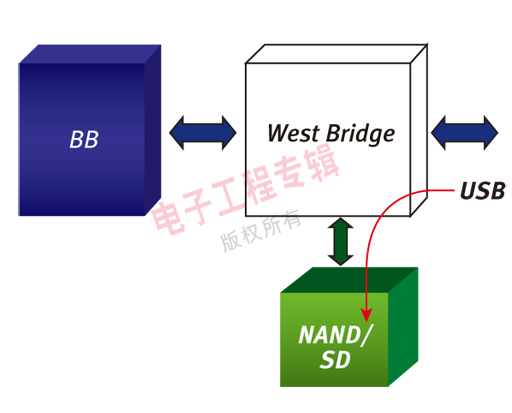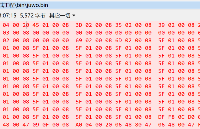我們都知道,main函數是C程序的入口,那這個入口能不能修改?
gcc其實是一系列工具的合集,如果你想看到詳細的步驟,編譯的時候加上-v選項就行。
int main()
{
return 0;
}
答案肯定是可以的,畢竟這個入口也是人為規定的。編譯分為4個步驟,預處理、編譯、匯編、鏈接。
gcc -E test.c -o test.i
gcc-Stest.i-otest.s
gcc -c test.s -o test.o
gcctest.o-otest
最后一步鏈接的時候,需要用到一個叫做鏈接腳本的東西,鏈接腳本就是類似于這樣的一個文件:
OUTPUT_ARCH( "riscv" ) /* 代碼采用的是RISC-V架構*/
ENTRY( _start ) /*代碼入口符號是_start,就是匯編啟動函數的符號*/
MEMORY
{
/* 定義了一段起始地址為0x80000000,長度為128MB的內存區域,取名叫ram*/
ram (wxa!ri) : ORIGIN = 0x80000000, LENGTH = 128M
}
SECTIONS
{
/* 所有輸入文件中的.text段、.text.*段都合在一起,組成輸出elf文件中的.text段;
* 此外,定義了兩個符號_text_start和_text_end ,注意符號'.'代表的是當前地址;
* 生成的.text段被放在了ram這個內存區域中。
*/
.text : {
PROVIDE(_text_start = .);
*(.text .text.*)
PROVIDE(_text_end = .);
} >ram
.rodata : {
PROVIDE(_rodata_start = .);
*(.rodata .rodata.*)
PROVIDE(_rodata_end = .);
} >ram
.data : {
. = ALIGN(4096);
PROVIDE(_data_start = .);
*(.sdata .sdata.*)
*(.data .data.*)
PROVIDE(_data_end = .);
} >ram
.bss :{
PROVIDE(_bss_start = .);
*(.sbss .sbss.*)
*(.bss .bss.*)
*(COMMON)
PROVIDE(_bss_end = .);
} >ram
PROVIDE(_memory_start = ORIGIN(ram));
PROVIDE(_memory_end = ORIGIN(ram) + LENGTH(ram));
PROVIDE(_heap_start = _bss_end);
PROVIDE(_heap_size = _memory_end - _heap_start);
}
它規定了程序的各個部分在內存中的位置,當然里面也包含了程序的入口:
ENTRY( _start )
只要修改了入口的名字,就能實現我們想要的功能。那么問題又來了,平時在編譯的時候,都是直接:
gcc hello.c
這個過程也沒看到什么鏈接腳本。gcc其實是一系列工具的合集,如果你想看到詳細的步驟,編譯的時候加上-v選項就行。
gcc test.c -o test -v
最后一步鏈接的時候,都會默認使用編譯器自帶的鏈接腳本。在Linux下,使用:
ld --verbose
可以拿到編譯器自帶的鏈接腳本。
/* Script for -z combreloc -z separate-code */
/* Copyright (C) 2014-2020 Free Software Foundation, Inc.
Copying and distribution of this script, with or without modification,
are permitted in any medium without royalty provided the copyright
notice and this notice are preserved. */
OUTPUT_FORMAT("elf64-x86-64", "elf64-x86-64",
"elf64-x86-64")
OUTPUT_ARCH(i386:x86-64)
ENTRY(_start)
SEARCH_DIR("=/usr/local/lib/x86_64-linux-gnu"); SEARCH_DIR("=/lib/x86_64-linux
-gnu"); SEARCH_DIR("=/usr/lib/x86_64-linux-gnu"); SEARCH_DIR("=/usr/lib/x86_64-linux-gnu64"); SEARCH_DIR("=/usr/local/lib64"); SEARCH_DIR("=/lib64"); SEARCH_DIR("=/usr/lib64"); SEARCH_DIR("=/usr/local/lib"); SEARCH_DIR("=/lib"); SEARCH_DIR("=/usr/lib"); SEARCH_DIR("=/usr/x86_64-linux-gnu/lib64"); SEARCH_DIR("=/usr/x86_64-linux-gnu/lib");SECTIONS
{
PROVIDE (__executable_start = SEGMENT_START("text-segment", 0x400000)); . =
SEGMENT_START("text-segment", 0x400000) + SIZEOF_HEADERS; .interp : { *(.interp) }
.note.gnu.build-id : { *(.note.gnu.build-id) }
.hash : { *(.hash) }
.gnu.hash : { *(.gnu.hash) }
.dynsym : { *(.dynsym) }
.dynstr : { *(.dynstr) }
.gnu.version : { *(.gnu.version) }
.gnu.version_d : { *(.gnu.version_d) }
.gnu.version_r : { *(.gnu.version_r) }
.rela.dyn :
{
*(.rela.init)
*(.rela.text .rela.text.* .rela.gnu.linkonce.t.*)
*(.rela.fini)
*(.rela.rodata .rela.rodata.* .rela.gnu.linkonce.r.*)
*(.rela.data .rela.data.* .rela.gnu.linkonce.d.*)
*(.rela.tdata .rela.tdata.* .rela.gnu.linkonce.td.*)
*(.rela.tbss .rela.tbss.* .rela.gnu.linkonce.tb.*)
*(.rela.ctors)
*(.rela.dtors)
*(.rela.got)
*(.rela.bss .rela.bss.* .rela.gnu.linkonce.b.*)
*(.rela.ldata .rela.ldata.* .rela.gnu.linkonce.l.*)
*(.rela.lbss .rela.lbss.* .rela.gnu.linkonce.lb.*)
*(.rela.lrodata .rela.lrodata.* .rela.gnu.linkonce.lr.*)
*(.rela.ifunc)
}
.rela.plt :
{
*(.rela.plt)
PROVIDE_HIDDEN (__rela_iplt_start = .);
*(.rela.iplt)
PROVIDE_HIDDEN (__rela_iplt_end = .);
}
. = ALIGN(CONSTANT (MAXPAGESIZE));
.init :
{
KEEP (*(SORT_NONE(.init)))
}
.plt : { *(.plt) *(.iplt) }
.plt.got : { *(.plt.got) }
.plt.sec : { *(.plt.sec) }
.text :
{
*(.text.unlikely .text.*_unlikely .text.unlikely.*)
*(.text.exit .text.exit.*)
*(.text.startup .text.startup.*)
*(.text.hot .text.hot.*)
*(SORT(.text.sorted.*))
*(.text .stub .text.* .gnu.linkonce.t.*)
/* .gnu.warning sections are handled specially by elf.em. */
*(.gnu.warning)
}
.fini :
{
KEEP (*(SORT_NONE(.fini)))
}
PROVIDE (__etext = .);
PROVIDE (_etext = .);
PROVIDE (etext = .);
. = ALIGN(CONSTANT (MAXPAGESIZE));
/* Adjust the address for the rodata segment. We want to adjust up to
the same address within the page on the next page up. */
. = SEGMENT_START("rodata-segment", ALIGN(CONSTANT (MAXPAGESIZE)) + (. & (CO
NSTANT (MAXPAGESIZE) - 1))); .rodata : { *(.rodata .rodata.* .gnu.linkonce.r.*) }
.rodata1 : { *(.rodata1) }
.eh_frame_hdr : { *(.eh_frame_hdr) *(.eh_frame_entry .eh_frame_entry.*) }
.eh_frame : ONLY_IF_RO { KEEP (*(.eh_frame)) *(.eh_frame.*) }
.gcc_except_table : ONLY_IF_RO { *(.gcc_except_table .gcc_except_table.*)
} .gnu_extab : ONLY_IF_RO { *(.gnu_extab*) }
/* These sections are generated by the Sun/Oracle C++ compiler. */
.exception_ranges : ONLY_IF_RO { *(.exception_ranges*) }
/* Adjust the address for the data segment. We want to adjust up to
the same address within the page on the next page up. */
. = DATA_SEGMENT_ALIGN (CONSTANT (MAXPAGESIZE), CONSTANT (COMMONPAGESIZE));
/* Exception handling */
.eh_frame : ONLY_IF_RW { KEEP (*(.eh_frame)) *(.eh_frame.*) }
.gnu_extab : ONLY_IF_RW { *(.gnu_extab) }
.gcc_except_table : ONLY_IF_RW { *(.gcc_except_table .gcc_except_table.*)
} .exception_ranges : ONLY_IF_RW { *(.exception_ranges*) }
/* Thread Local Storage sections */
.tdata :
{
PROVIDE_HIDDEN (__tdata_start = .);
*(.tdata .tdata.* .gnu.linkonce.td.*)
}
.tbss : { *(.tbss .tbss.* .gnu.linkonce.tb.*) *(.tcommon) }
.preinit_array :
{
PROVIDE_HIDDEN (__preinit_array_start = .);
KEEP (*(.preinit_array))
PROVIDE_HIDDEN (__preinit_array_end = .);
}
.init_array :
{
PROVIDE_HIDDEN (__init_array_start = .);
KEEP (*(SORT_BY_INIT_PRIORITY(.init_array.*) SORT_BY_INIT_PRIORITY(.ctors.
*))) KEEP (*(.init_array EXCLUDE_FILE (*crtbegin.o *crtbegin?.o *crtend.o *crte
nd?.o ) .ctors)) PROVIDE_HIDDEN (__init_array_end = .);
}
.fini_array :
{
PROVIDE_HIDDEN (__fini_array_start = .);
KEEP (*(SORT_BY_INIT_PRIORITY(.fini_array.*) SORT_BY_INIT_PRIORITY(.dtors.
*))) KEEP (*(.fini_array EXCLUDE_FILE (*crtbegin.o *crtbegin?.o *crtend.o *crte
nd?.o ) .dtors)) PROVIDE_HIDDEN (__fini_array_end = .);
}
.ctors :
{
/* gcc uses crtbegin.o to find the start of
the constructors, so we make sure it is
first. Because this is a wildcard, it
doesn't matter if the user does not
actually link against crtbegin.o; the
linker won't look for a file to match a
wildcard. The wildcard also means that it
doesn't matter which directory crtbegin.o
is in. */
KEEP (*crtbegin.o(.ctors))
KEEP (*crtbegin?.o(.ctors))
/* We don't want to include the .ctor section from
the crtend.o file until after the sorted ctors.
The .ctor section from the crtend file contains the
end of ctors marker and it must be last */
KEEP (*(EXCLUDE_FILE (*crtend.o *crtend?.o ) .ctors))
KEEP (*(SORT(.ctors.*)))
KEEP (*(.ctors))
}
.dtors :
{
KEEP (*crtbegin.o(.dtors))
KEEP (*crtbegin?.o(.dtors))
KEEP (*(EXCLUDE_FILE (*crtend.o *crtend?.o ) .dtors))
KEEP (*(SORT(.dtors.*)))
KEEP (*(.dtors))
}
.jcr : { KEEP (*(.jcr)) }
.data.rel.ro : { *(.data.rel.ro.local* .gnu.linkonce.d.rel.ro.local.*) *(.da
ta.rel.ro .data.rel.ro.* .gnu.linkonce.d.rel.ro.*) } .dynamic : { *(.dynamic) }
.got : { *(.got) *(.igot) }
. = DATA_SEGMENT_RELRO_END (SIZEOF (.got.plt) >= 24 ? 24 : 0, .);
.got.plt : { *(.got.plt) *(.igot.plt) }
.data :
{
*(.data .data.* .gnu.linkonce.d.*)
SORT(CONSTRUCTORS)
}
.data1 : { *(.data1) }
_edata = .; PROVIDE (edata = .);
. = .;
__bss_start = .;
.bss :
{
*(.dynbss)
*(.bss .bss.* .gnu.linkonce.b.*)
*(COMMON)
/* Align here to ensure that the .bss section occupies space up to
_end. Align after .bss to ensure correct alignment even if the
.bss section disappears because there are no input sections.
FIXME: Why do we need it? When there is no .bss section, we do not
pad the .data section. */
. = ALIGN(. != 0 ? 64 / 8 : 1);
}
.lbss :
{
*(.dynlbss)
*(.lbss .lbss.* .gnu.linkonce.lb.*)
*(LARGE_COMMON)
}
. = ALIGN(64 / 8);
. = SEGMENT_START("ldata-segment", .);
.lrodata ALIGN(CONSTANT (MAXPAGESIZE)) + (. & (CONSTANT (MAXPAGESIZE) - 1)
) : {
*(.lrodata .lrodata.* .gnu.linkonce.lr.*)
}
.ldata ALIGN(CONSTANT (MAXPAGESIZE)) + (. & (CONSTANT (MAXPAGESIZE) - 1))
: {
*(.ldata .ldata.* .gnu.linkonce.l.*)
. = ALIGN(. != 0 ? 64 / 8 : 1);
}
. = ALIGN(64 / 8);
_end = .; PROVIDE (end = .);
. = DATA_SEGMENT_END (.);
/* Stabs debugging sections. */
.stab 0 : { *(.stab) }
.stabstr 0 : { *(.stabstr) }
.stab.excl 0 : { *(.stab.excl) }
.stab.exclstr 0 : { *(.stab.exclstr) }
.stab.index 0 : { *(.stab.index) }
.stab.indexstr 0 : { *(.stab.indexstr) }
.comment 0 : { *(.comment) }
.gnu.build.attributes : { *(.gnu.build.attributes .gnu.build.attributes.*) }
/* DWARF debug sections.
Symbols in the DWARF debugging sections are relative to the beginning
of the section so we begin them at 0. */
/* DWARF 1 */
.debug 0 : { *(.debug) }
.line 0 : { *(.line) }
/* GNU DWARF 1 extensions */
.debug_srcinfo 0 : { *(.debug_srcinfo) }
.debug_sfnames 0 : { *(.debug_sfnames) }
/* DWARF 1.1 and DWARF 2 */
.debug_aranges 0 : { *(.debug_aranges) }
.debug_pubnames 0 : { *(.debug_pubnames) }
/* DWARF 2 */
.debug_info 0 : { *(.debug_info .gnu.linkonce.wi.*) }
.debug_abbrev 0 : { *(.debug_abbrev) }
.debug_line 0 : { *(.debug_line .debug_line.* .debug_line_end) }
.debug_frame 0 : { *(.debug_frame) }
.debug_str 0 : { *(.debug_str) }
.debug_loc 0 : { *(.debug_loc) }
.debug_macinfo 0 : { *(.debug_macinfo) }
/* SGI/MIPS DWARF 2 extensions */
.debug_weaknames 0 : { *(.debug_weaknames) }
.debug_funcnames 0 : { *(.debug_funcnames) }
.debug_typenames 0 : { *(.debug_typenames) }
.debug_varnames 0 : { *(.debug_varnames) }
/* DWARF 3 */
.debug_pubtypes 0 : { *(.debug_pubtypes) }
.debug_ranges 0 : { *(.debug_ranges) }
/* DWARF Extension. */
.debug_macro 0 : { *(.debug_macro) }
.debug_addr 0 : { *(.debug_addr) }
.gnu.attributes 0 : { KEEP (*(.gnu.attributes)) }
/DISCARD/ : { *(.note.GNU-stack) *(.gnu_debuglink) *(.gnu.lto_*) }
}
我們把它導入一個文件中,后綴就叫lds吧。
ld--verbose>xx.lds
為了滿足它的語法規則,還得刪除一些東西,保留這兩條杠之間的內容即可。看下鏈接腳本,找到ENTRY,就是程序的入口。
ENTRY(_start)
不過它并不是main函數,而是_start函數。因為在執行用戶的代碼之前,還有很多事情要做,這個后面在講。如果要修改程序的入口,只要把_start改掉就行,比如改成test,然后保存文件。
ENTRY(test)
寫個測試代碼,代碼中有main函數,也有test函數,test就是剛才我們說的入口,不過得指定退出方式,要不然程序運行的時候會出問題。
voidtest()
{
printf("this is test ...
");
exit(0);
}
int main()
{
printf("helloworld
");
return 0;
}
編譯代碼,使用-T選項,指定鏈接腳本。
gcctest.c-otest-Txx.lds
運行程序,代碼執行的是test函數。
root@Turbo:test# ./test
this is test ...
root@Turbo:test#
修改程序的入口還有一個更簡單的方法,gcc編譯的時候,直接使用-e選項,也能達到一樣的效果。
gcc test.c -o test -e test
聲明:本文內容及配圖由入駐作者撰寫或者入駐合作網站授權轉載。文章觀點僅代表作者本人,不代表電子發燒友網立場。文章及其配圖僅供工程師學習之用,如有內容侵權或者其他違規問題,請聯系本站處理。
舉報投訴
-
程序
+關注
關注
117文章
3789瀏覽量
81140 -
函數
+關注
關注
3文章
4333瀏覽量
62723 -
編譯
+關注
關注
0文章
659瀏覽量
32899
原文標題:main函數不一定就是程序入口
文章出處:【微信號:學益得智能硬件,微信公眾號:學益得智能硬件】歡迎添加關注!文章轉載請注明出處。
發布評論請先 登錄
相關推薦
網友可能不一定很了解的時間單位
時間單位有的網友可能不一定很了解,特別是搞FPGA的網友,提供。 無限可分,沒有最小。 s(秒)以下的時間單位(千進制): 1s (秒) =1000 ms (毫秒) 1ms (毫秒) =1000
發表于 01-11 11:59
gpio和中斷斷開發現喚醒后中斷不一定及時響應是為什么?
斷開,發現喚醒后中斷不一定及時響應,即使響應了系統也死掉了,請問這種情況怎么解決呢?我在idle_profile的基礎上做的實驗。deepsleep模式的功耗有點兒高了。
發表于 06-12 16:42
為什么高速USB并不一定表示手機擁有高速性能
為什么高速USB并不一定表示手機擁有高速性能
數碼多媒體向日用電器的發展改變了消費者接觸和享受多媒體娛樂節目的方式。現在消費者可以通過撲克牌大小的設備來
發表于 01-04 11:21
?642次閱讀

只有潔碧才是全民信賴的水牙線品牌嗎?那可不一定!
身體健康就一定要保證口腔健康。使用水牙線已經是很多西方家庭會使用的清潔口腔內部的辦法,對于國內的消費者來說,水牙線還算是新鮮玩意,所以面對多種多樣的水牙線品牌,覺得只有潔碧,這個水牙線的創始品牌才是值得信賴的,那可不一定
發表于 04-16 20:31
?490次閱讀
正確的原理圖不一定能產生正確的 PCB 設計
作者:黃剛一個“xue淋淋”的案例告訴大家:正確的原理圖不一定就能產生正確的PCB設計。原理圖設計與PCB設計都是研發流程中的必經階段,我們知道,原理圖設計是PCB設計的前端流程,之前的案例也分析過一個錯誤的原理圖必然會導致
STM32程序無法進入main函數的解決方法
很多人在基于STM32單片機項目開發過程中,會遇到STM32程序無法進入main的現象,在這篇文將分享STM32程序無法進入main函數的解




 main函數不一定就是程序入口
main函數不一定就是程序入口













評論